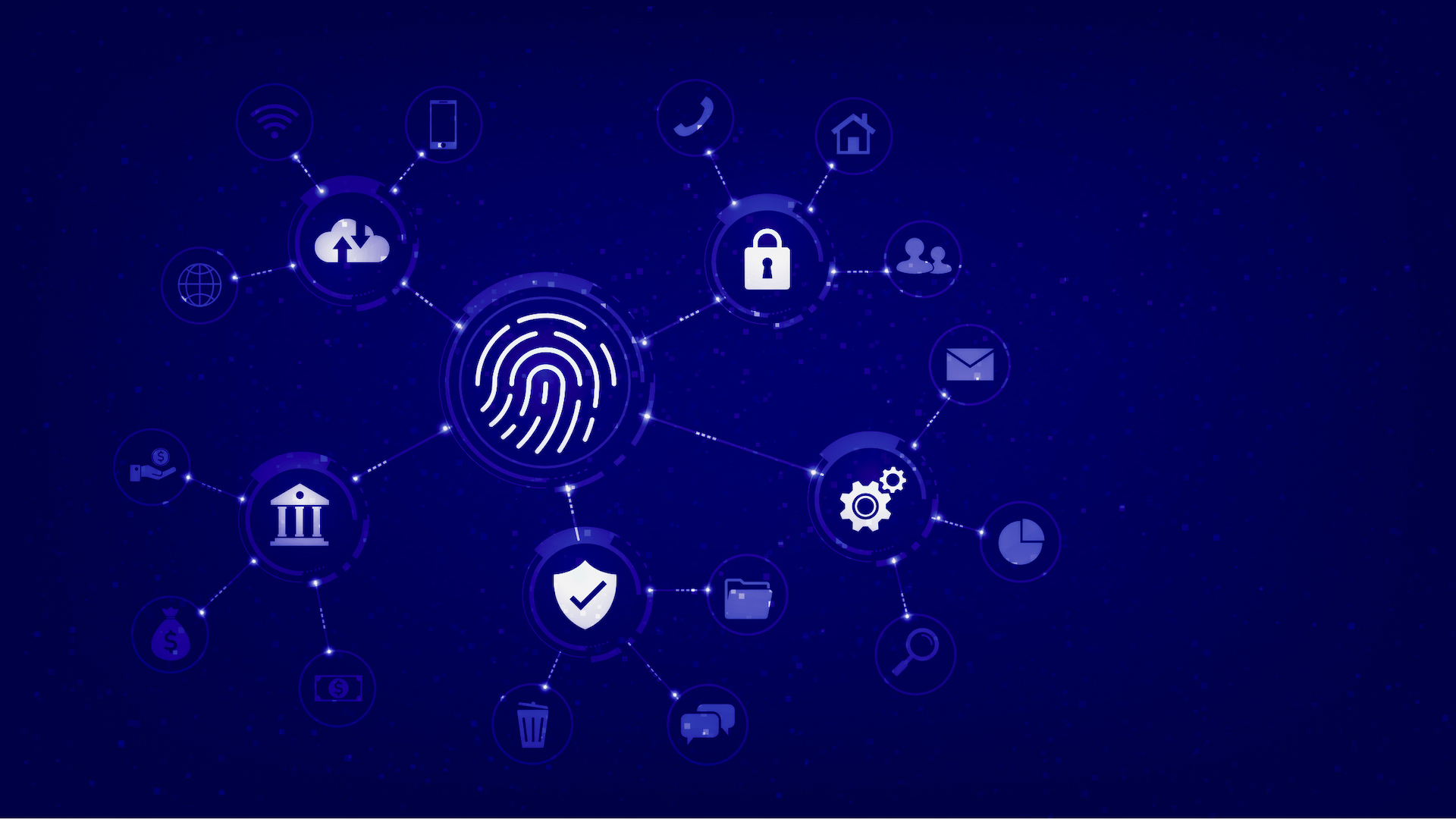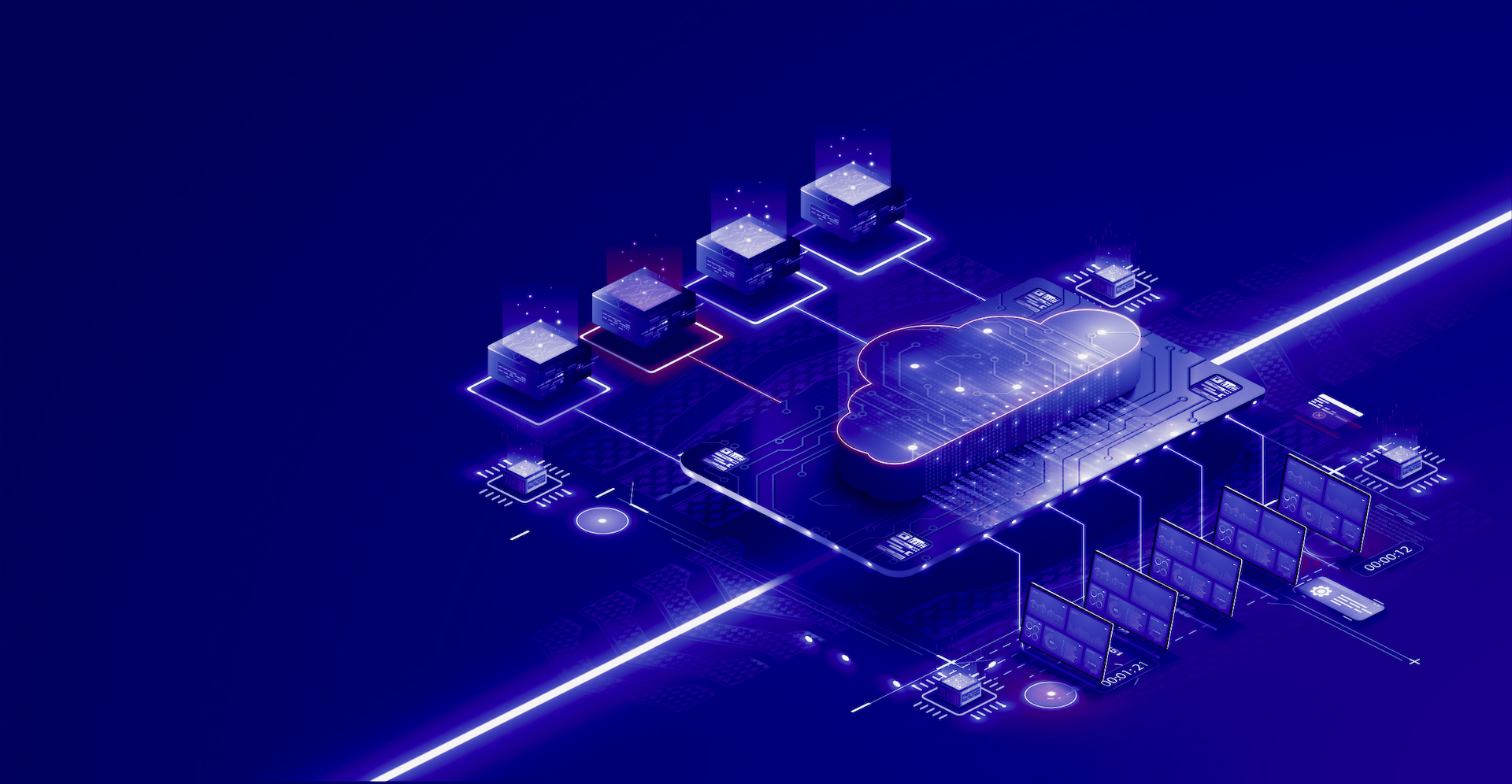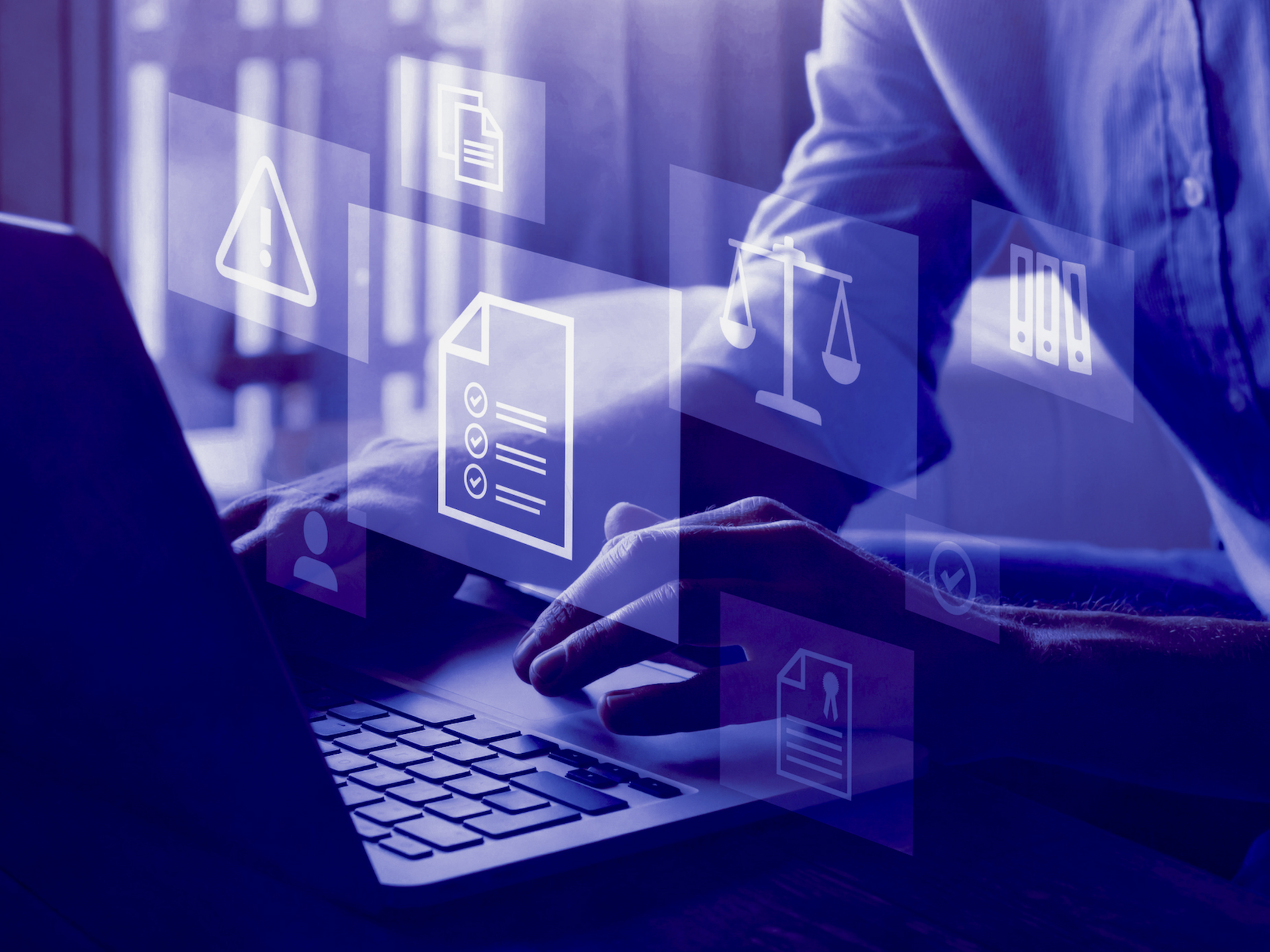Cyber-attacks today are not only increasing in volume but are becoming more sophisticated, with many adversaries now relying on AI and other advanced software to launch attacks. The good news is that investing in a high-quality SIEM can prevent and mitigate most of these threats. Cloud-based SIEMs that utilise artificial intelligence (AI) and machine learning (ML) are particularly effective at doing so – and, as it stands, are the most advanced security tools available on the market.
While legacy SIEMs and traditional software solutions are still available for purchase, legacy solutions are more limited in what they can do, typically only offering basic analysis and data aggregation capabilities.
With a myriad of vendors and the choice between legacy and next-gen SIEMs, organisations, CISOs, and key decision-makers often find it hard to find a solution that best aligns with their unique needs and requirements.
In this article, we’ll cover what SIEM is, some key considerations you should keep in mind when looking for a SIEM, and how to determine which SIEM is best for your business.
Key Takeaways
- Before you start looking for a SIEM solution, you should identify your organisation’s specific business requirements, regulatory compliance needs, and budgetary needs.
- Some key features you should look for in a SIEM include robust real-time monitoring capabilities and threat intelligence feed integration.
- Modern, next-gen SIEMs that leverage AI and machine learning to perform threat detection and analysis are currently the most advanced software available for purchase. Legacy SIEMs, on the other hand, tend to only offer more basic data aggregation and correlation functions.

Overview of SIEM
Security Information and Event Management (SIEM) tools provide organisations with a comprehensive view of their information technology (IT) infrastructure security by collecting, storing, and analysing data logs from multiple sources in real time.
Aside from providing visibility into an organisation’s environment, SIEMs also correlate these data points and identify patterns that indicate potential security threats – many of which would otherwise go unnoticed. SIEMs can identify all kinds of security events, ranging from minor policy violations to major security breaches – providing the latest intel on your network’s security status.
While SIEMs broadly serve the same purpose, different SIEMs vary significantly in terms of their features and functionalities. Ultimately, you want to find a SIEM that will give you the highest ROI, given your needs and expectations.

Understanding Your Business Requirements
Before you start thinking about which SIEM is most optimal for your organisation, you should review and identify your specific business requirements. You’ll want to consider your security goals, compliance needs, budget, and user and technical support requirements. While this additional step may seem tedious, it will help you make an informed decision, and select a SIEM system that is well-aligned with your operational needs and strategic objectives.
Security Goals and Objectives
The first step is to define the current state, security goals and objectives of your organisation. You should think about your existing security posture, security requirements, and industry-specific problems or security threats. For example, many small businesses don’t necessarily have resources to put into cybersecurity, making them an easy target for hacking. By conducting a Gap Analysis and outlining the business outcomes you are looking to achieve, you can then determine the scope and scale of your SIEM, including which part of your IT infrastructure you want it to cover.
The right SIEM should have the necessary functionalities to address the identified risks and requirements – so make sure you keep these identified goals and objectives in mind during your SIEM search and when you evaluate different options.
Regulatory Compliance Needs
Next up, think about your regulatory compliance needs and responsibilities. It is crucial to find a SIEM robust and reliable enough to help ensure that you adhere to all the relevant laws and regulations you are subject to. Your SIEM should be able to facilitate assessments and reporting based on specific compliance standards.
As an example, The HIPAA regulation stipulates that all log data must be saved for six years – so organisations subject to this will need to find a SIEM that can accommodate these specific retention needs.
Organisations must therefore carefully consider whether the SIEM they are considering can effectively handle their regulatory compliance needs.
Budgetary Considerations
Of course, you’ll have to consider your budgetary constraints, as adopting an enterprise-level SIEM can be a hefty investment. One way to think about your budget is by calculating it in terms of the total cost of ownership (TOC) – which not only considers the monthly or annual recurring fees but also the time and effort it takes to implement and deploy.
Some SIEMs can take many months to set up, and this translates into additional costs. The exact costs of implementing SIEM solutions, therefore, will vary widely, involving a whole host of factors like implementation costs, cloud service fees, security analytics capabilities, and overall security infrastructure. The choice between on-premises and cloud computing solutions can also impact the cost – as on-premises SIEMs involve a high upfront cost, whereas cloud-based SIEMs operate on a pay-as-you-go basis.
Ideally, you’ll want to search for a solution that contains the latest technology, is quick to deploy, yet still fits within your budgetary requirements. An example of this is Blacklight AI, an enterprise-level SaaS solution that leverages AI and Machine Learning for users to achieve proactive threat detection, without the heavy price tag. Adopted in a myriad of industries by businesses of different sizes, Blacklight AI achieves 90% faster deployment times, and a 70% reduction in total cost of ownership. Reach out here and speak to an expert today to learn more.
User and Technical Support Requirements
Moving away from budgetary considerations, another big consideration is user and technical support requirements. Whether a SIEM is right for an enterprise or not often depends on the organisation’s security personnel and their competencies. SIEM systems with complex technical support requirements, for example, may not be suitable for organisations that don’t have an in-house security team or lack the necessary expertise.
Additionally, depending on your business needs or the industry that you are in, you may require longer support hours and packages that include comprehensive support for your cyber teams. Hence, you should consider finding a partner that can provide around-the-clock support or monitoring services. It’s all about finding the right match.

Evaluating SIEM Features and Functionality
After you clarify what your business requirements are and have a broad understanding of what kind of solution is needed to cater to those requirements, you can start considering specific SIEMs that are available in the market and comparing them. We’ll cover some of the most important features below, which you should keep in mind.
As you’ll soon see, modern SIEM offerings powered by ML and advanced analytics are the most robust tools available for threat detection and analysis – and are ideal for organisations looking for the full package.
On-premises vs. Cloud
On-premises SIEMs, also referred to as on-prem SIEMs, are deployed internally using the organisation’s software and hardware, whereas cloud solutions are hosted on the cloud. Examples include Amazon Web Services (AWS), Microsoft Azure and AliCloud, to name a few. Legacy SIEMs are often limited to on-prem deployments, whereas most modern SIEM solutions are on the cloud and are available in the form of SaaS.
Cloud-based SIEMs tend to be the preferred option nowadays as they can be deployed far quicker, require less maintenance, are easily scalable, and can use data sets from on-prem and cloud. Nonetheless, businesses in highly regulated industries, such as banks, may prefer to stick to on-prem solutions to adhere to compliance regulations. Alternatively, it is also possible to opt for a mix of the two systems.
Learn more by accessing our Guide to Next-Gen SIEM here.
Real-Time Aggregation, Monitoring and Correlation Capabilities
Since threats can unfold very quickly, selecting a SIEM that can aggregate data from all sources in real-time is crucial. Ideally, you’ll want to select a SIEM that can ingest data from all the sources you have and monitor any data set whether it is on-premises or in the cloud. Real-time monitoring capabilities ensure that you always have full visibility over all the activity in your network, enabling speedy threat detection and incident response, and ensuring the protection of critical systems and the entire network infrastructure.
In addition to real-time monitoring capabilities, your SIEM should be able to correlate and link disparate data points into security events on a real-time basis, to identify potential threats or vulnerabilities before they strike. Therein lies the strength of SIEM.
Threat Intelligence Feeds Integrations
Most SIEMs can ingest threat intelligence feeds. Threat intelligence feeds are sources of information gathered by security analysts, researchers, and the global cybersecurity community, which can help organisations improve their threat-hunting capabilities by providing timely and actionable intelligence on both insider and external threats. The data received from these feeds can be used to identify indicators of compromise, abnormal activity, and malicious activity, which might otherwise go unnoticed – and provide context for various types of threats and patterns.
The quality of threat intelligence integration, however, varies between different vendors. Some SIEMs have feeds that are updated in real-time, whereas with others there may be a delay. If you want to maximise the potential of threat intelligence feeds, we suggest that you choose a SIEM that seamlessly integrates threat intelligence and updates it in real-time (or near real-time). The SIEM should also be able to assign weight or levels of severity to various threats and eliminate redundant intelligence.
Integrations
Your SIEM tool should be able to easily integrate with other security tools, applications, data sources and technology across your whole ecosystem. This will ensure that you can incorporate all data into your SIEM for analysis and correlation, hence avoiding any blind spots.
Artificial Intelligence (AI) and Machine Learning (ML) Capabilities
Your SIEM should be able to effectively analyse and generate insights based on the log and event data it collects. While most SIEMs have analytical capabilities, many next-generation SIEMs are driven by AI and ML-powered analytics, which are more advanced.
AI algorithms can correlate malicious patterns and detect incidents without the need for pre-existing or known attack signatures, while embedded machine learning allows for continuous fine-tuning to eliminate incidences of false positives which can distract security teams from the real issues. In addition to ML, next-gen SIEMs also feature automated user and entity behaviour analytics (UEBA), which can create baselines of normal user and device behaviour and identify variances in patterns over time.
Through AI, therefore, next-generation SIEM solutions provide far superior analytical functionalities, which can help you identify subtle patterns of malicious activity that traditional methods and legacy SIEMs may overlook. Going for AI-driven SIEMs, as opposed to legacy SIEMs, will give you an edge and ensure that you stay proactive.
Learn how AI is transforming cybersecurity by enabling organisations to adopt a proactive security posture with our FREE e-book
Regulatory Compliance
While the main purpose of SIEM is to detect cyber threats, most SIEMs offer reporting capabilities to support regulatory compliance – like generating reports of non-compliant activities, policy violations, and information about threat response measures in response to attacks. Some regulations simply demand organisations to have in place a log management tool, hence having a SIEM meets that demand.
When searching for a SIEM, you’ll want to consider whether it provides built-in support to help your organisation generate compliance reports and meet the requirements of any security initiatives or regulations you are subject to. This is an even more important consideration for those organisations dealing with sensitive data, or those that are part of highly regulated industries.
Many next-gen and newer SIEMs automatically provide a whole host of reporting features to meet regulations like HIPAA, PCI/DSS, FERPA, etc – making it a smart choice for those organisations that prioritise regulatory compliance.
Conclusion
As you’ve probably gathered by now, not all SIEMs are created equal. As such, the selection of an appropriate SIEM is a strategic decision that requires careful thinking and planning. By gaining a deeper understanding of what you are searching for and evaluating each feature and functionality of different SIEM options carefully, organisations can make a good decision. There is no one way to go about it – but following the best practices we covered will ensure that you are best informed to make a choice.
For those looking to find a SIEM that can do it all and provide the best threat detection possible, we would strongly advise going for next-gen SIEMs that leverage AI/ML and are cloud-based. Predictive AI-based threat-hunting platforms are the future of SIEM and are the key to staying one step ahead of threats.
About Blacklight AI SIEM
Blacklight AI SIEM is a truly proactive AI-powered and cloud-native detection software. Architected, designed, and built using industry best practices, it offers the maximum level of flexibility and extensibility. At its core, Blacklight’s architecture is rooted in artificial intelligence, machine learning, and advanced analytics to empower cybersecurity professionals with the tools they need to predict, detect, and mitigate threats effectively.
Blacklight integrates with all cybersecurity solutions and serves as the command centre for any organisation. The solution enables security teams to uncover threats more efficiently, gain better visibility, significantly decrease costs, and minimise risk, all from a single platform.
Learn more: blacklightai.com
Follow us: linkedin.com/company/blacklightbyowlgaze
Book a demo: blacklightai.com/contact-us/
© 2024 Blacklight AI. All rights reserved. For permission to use the content on our website, please contact us at info@blacklightai.com

